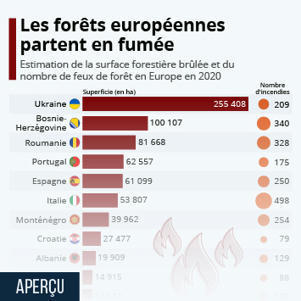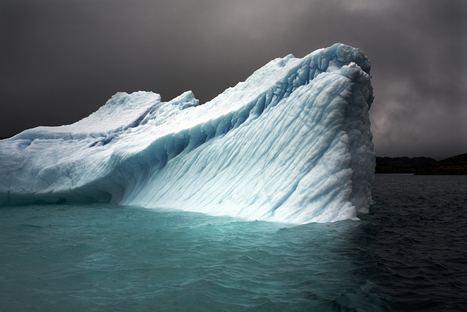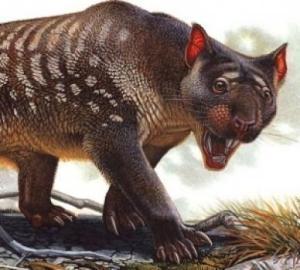Ce graphique montre une estimation de la surface forestière brûlée et du nombre de feux de forêt dans les pays européens en 2020.
Get Started for FREE
Sign up with Facebook Sign up with X
I don't have a Facebook or a X account


|
News from the world - nouvelles du monde
News from everywhere around the world - Actualité des 4 coins d'une boule qui tourne de moins en moins rond - plus quelques news au sujet du journalisme et de la presse... Si, si ! Curated by Marco Bertolini |
 Your new post is loading...
Your new post is loading...

|
Scooped by
Marco Bertolini
May 18, 2013 7:09 AM
|
Les villages inuits d'Alaska sont menacés par la fonte des neiges et du permafrost. 186 villages sur 220 pourraient disparaître dans les prochaines années, victimes du réchauffement climatique, dont les Etats-Unis sont les premiers responsables.

|
Rescooped by
Marco Bertolini
from L'Univers passe
May 13, 2013 5:35 AM
|
Exclusive timelapse: See climate change, deforestation and urban sprawl unfold as Earth evolves over 30 years.
Via Vincent Mignerot
30 ans d'action de l'homme sur l'environnement, filmés en images satellites et rendues par Google Timelapse. Des images impressionnantes qui en disent plus long que tous les discours écologiques !

|
Rescooped by
Marco Bertolini
from Amazing Science
May 7, 2013 3:21 AM
|
Most species of gigantic animals that once roamed Australia had disappeared by the time people arrived, a major review of the available evidence has concluded.
The research challenges the claim that humans were primarily responsible for the demise of the megafauna in a proposed "extinction window" between 40,000 and 50,000 years ago, and points the finger instead at climate change.
An international team led by the University of New South Wales, and including researchers at the University of Queensland, the University of New England, and the University of Washington, carried out the study. It is published in the Proceedings of the National Academy of Sciences.
"The interpretation that humans drove the extinction rests on assumptions that increasingly have been shown to be incorrect. Humans may have played some role in the loss of those species that were still surviving when people arrived about 45,000 to 50,000 years ago -- but this also needs to be demonstrated," said Associate Professor Stephen Wroe, from UNSW, the lead author of the study.
"There has never been any direct evidence of humans preying on extinct megafauna in Sahul, or even of a tool-kit that was appropriate for big-game hunting," he said.
About 90 giant animal species once inhabited the continent of Sahul, which included mainland Australia, New Guinea and Tasmania.
"These leviathans included the largest marsupial that ever lived -- the rhinoceros-sized Diprotodon - and short-faced kangaroos so big we can't even be sure they could hop. Preying on them were goannas the size of large saltwater crocodiles with toxic saliva and bizarre but deadly marsupial lions with flick-blades on their thumbs and bolt cutters for teeth," said Associate Professor Wroe.
The review concludes there is only firm evidence for about 8 to 14 megafauna species still existing when Aboriginal people arrived. About 50 species, for example, are absent from the fossil record of the past 130,000 years.
Via Dr. Stefan Gruenwald
Des scientifiques sont à présent certains qu'un changement climatique a détruit la mégafaune d'Australie. Et non pas l'action humaine, comme on l'a longtemps cru. Un avertissement ?

|
Scooped by
Marco Bertolini
December 7, 2012 5:32 AM
|
L'émirat, qui accueille jusqu'à vendredi la conférence de l'ONU sur le changement climatique, ne veut plus dépendre d'une agriculture étrangère menacée par le réchauffement.













Alors que le Nord de l'Europe patauge dans les inondations, l'Est et le Sud flambent : les indendies menacent les forêts européennes.